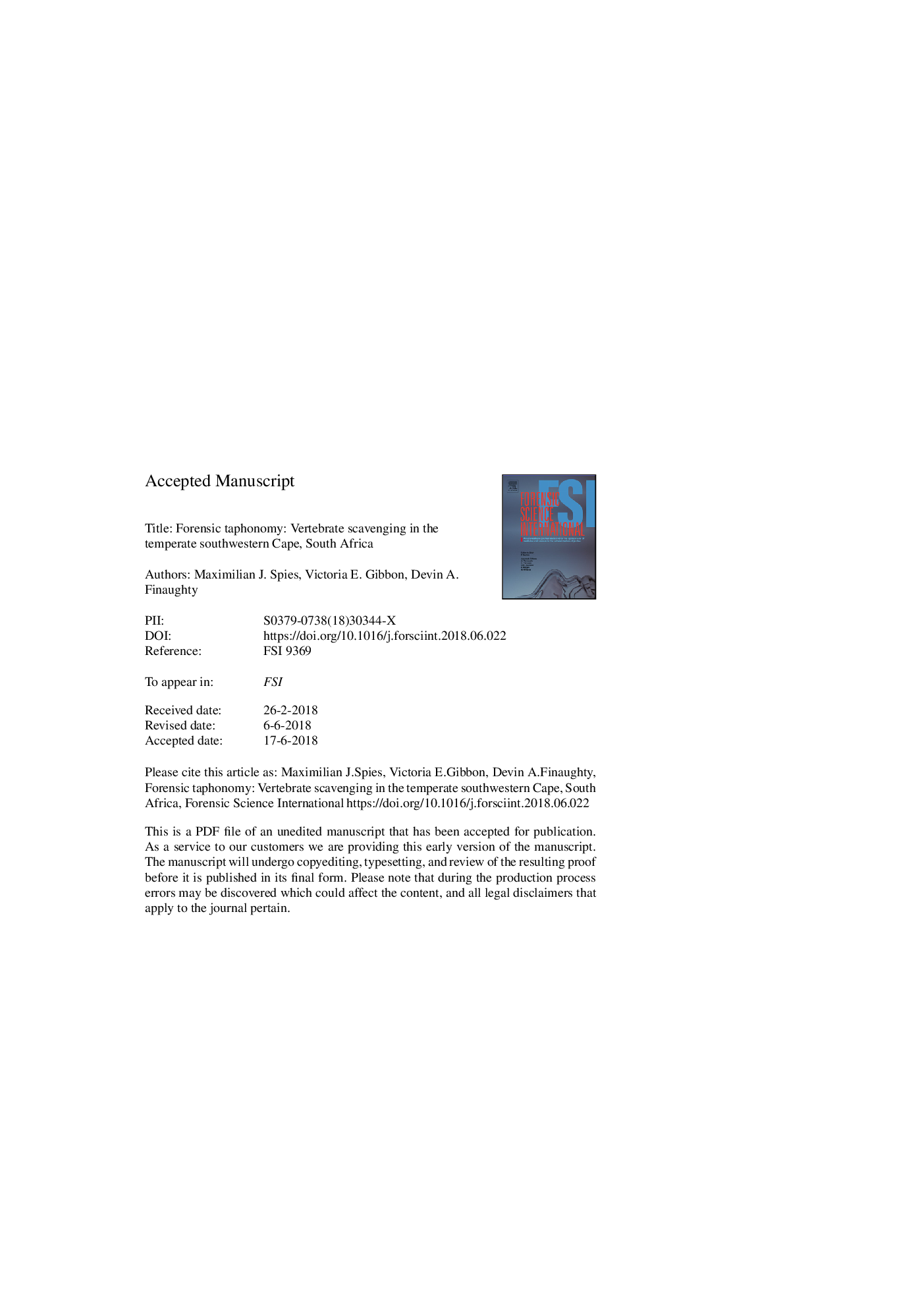| کد مقاله | کد نشریه | سال انتشار | مقاله انگلیسی | نسخه تمام متن |
|---|---|---|---|---|
| 6550778 | 1421960 | 2018 | 21 صفحه PDF | دانلود رایگان |
عنوان انگلیسی مقاله ISI
Forensic taphonomy: Vertebrate scavenging in the temperate southwestern Cape, South Africa
دانلود مقاله + سفارش ترجمه
دانلود مقاله ISI انگلیسی
رایگان برای ایرانیان
کلمات کلیدی
موضوعات مرتبط
مهندسی و علوم پایه
شیمی
شیمی آنالیزی یا شیمی تجزیه
پیش نمایش صفحه اول مقاله

چکیده انگلیسی
Vertebrate scavenging can significantly accelerate the rate of decomposition, which can hinder estimating the post-mortem interval (PMI). Patterns of decomposition and scavenging are highly specific to different environments in a forensic context, with no known data for South Africa. A better understanding of local decomposition patterns, taking scavenging into account, could increase the accuracy of PMI estimation and improve identification of human remains. Using a porcine model in the forensically significant thicketed Cape Flats Dune Strandveld habitat, the effect of vertebrate scavenging on the decomposition process was examined. This part of Cape Town suffers from poor socioeconomic conditions and a high murder rate, which is due in part to the dense population. Human decomposition was simulated using three small (â¼20Â kg) domestic pig (Sus scrofa domesticus) carcasses, with ethical clearance. One pig served as a control and was caged to prevent vertebrate but not invertebrate access; the other two served as experimental treatments. They were deployed in Delft, Cape Town, and observed by motion-activated, time-lapse remote photography to record scavenger species and activity. A rapid increase in the decomposition rate was observed due to Cape grey mongoose (Galerella pulverulenta) scavenging, with early skeletonisation reached by both experimental pigs by day 14, compared to the control remaining in advanced decomposition after 93 days. Mongoose is the primary scavenger in this habitat, and showed notable patterns of feeding behaviour, exclusively within daylight hours. Scavenging activity was only influenced by rainfall later in the cycle. This research provides knowledge on locally relevant decomposition patterns and highlights the necessity for PMI estimation methods to consider vertebrate scavengers. This may improve human skeletal identification in forensic cases. There is scope for expansion of this study, with an investigation of seasonal effects, the interaction between invertebrate and vertebrate activity, as well as, the effect of clothing on scavenger access.
ناشر
Database: Elsevier - ScienceDirect (ساینس دایرکت)
Journal: Forensic Science International - Volume 290, September 2018, Pages 62-69
Journal: Forensic Science International - Volume 290, September 2018, Pages 62-69
نویسندگان
Maximilian J. Spies, Victoria E. Gibbon, Devin A. Finaughty,